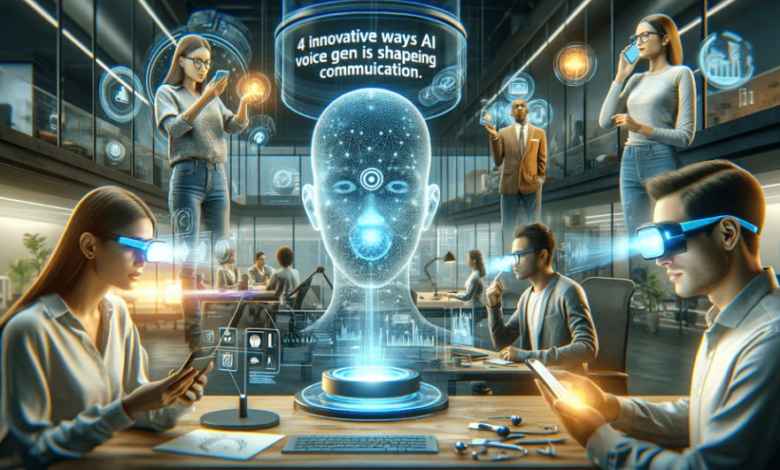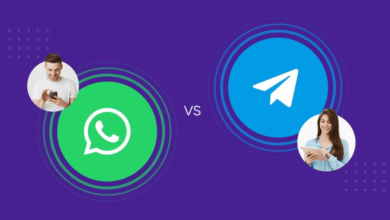How Voice Over AI Is Changing the Future of Digital Communication

In the rapidly evolving world of digital communication, artificial intelligence is changing how we speak, listen, and interact. Among the most transformative developments is Voice Over AI technology that allows machines to generate, interpret, and replicate human speech with astonishing accuracy and emotion. What once sounded robotic and unnatural has become so lifelike that distinguishing between human and AI generated voices is increasingly difficult.
Voice Over AI is revolutionizing industries from marketing and media to education and accessibility. It’s redefining not only how content is created and shared, but also how people experience it. This article explores how AI driven voice technology is transforming digital communication, what benefits and challenges it brings, and where it’s headed next.
The Evolution of Voice AI
The concept of computer-generated speech is not new. Early versions of text-to-speech systems appeared in the mid-20th century, but their quality was limited and their applications narrow. The true breakthrough came with machine learning and neural networks, allowing computers to learn from massive datasets of real human voices.
Today, modern AI systems can analyze the tone, emotion, rhythm, and accent of speech and reproduce them almost perfectly. They can even adapt their delivery to match specific moods or audiences sounding friendly, serious, enthusiastic, or calm depending on context. This flexibility has turned Voice Over AI into one of the most powerful tools in digital communication.
Transforming Content Creation and Marketing
1. Fast, Affordable, and Scalable Production
Traditionally, creating a professional voiceover required hiring a voice actor, booking studio time, and paying for editing and production. This process was time consuming and expensive. AI voice technology changes everything.
With voice over ai, marketers, content creators, and media companies can generate high-quality voiceovers within minutes, at a fraction of the cost. All it takes is a script. The AI reads it in a natural, human-like tone and it can instantly produce versions in multiple languages or accents.
This is particularly valuable for brands producing large amounts of video or audio content. Instead of recording every piece manually, they can automate the process, ensuring consistency and speed while still maintaining emotional impact.
2. Creating Consistent Brand Voices
Voice is one of the most powerful tools for brand identity. A recognizable voice builds trust and emotional connection with an audience. With Voice Over AI, companies can design a custom digital voice that represents their brand across all platforms from advertisements and tutorials to customer support bots.
This creates a unified brand experience. A company’s “voice” becomes as distinctive as its logo or slogan, and AI ensures that it remains consistent in tone and quality everywhere it’s used.
3. Expanding Global Reach Through Localization
Voice Over AI also helps brands break language barriers. A single piece of content can be translated and voiced in dozens of languages almost instantly. Instead of using subtitles or robotic translations, businesses can now create fully localized voiceovers that sound natural and emotionally engaging.
This makes international communication smoother, helping brands reach global audiences while respecting cultural and linguistic differences. The same applies to influencers and online educators who want their content to be accessible to more people worldwide.
See also: From WhatsApp Web to Telegram: Expanding Your Communication Horizons
Empowering Accessibility and Inclusion
One of the most meaningful impacts of Voice AI lies in accessibility. For millions of people with visual impairments, learning disabilities, or language barriers, AI voice technology opens new doors.
1. Giving Everyone a Voice
Text-to-speech tools now allow individuals who are unable to speak to communicate using personalized synthetic voices. These AI generated voices can even be modeled after a person’s natural tone before illness or injury, restoring not just communication, but also a sense of identity.
2. Making Information More Accessible
AI-generated voiceovers are used in education, online learning, and public communication to make information easier to access. Students with dyslexia can listen instead of reading. Visually impaired users can hear web pages, books, and documents read aloud naturally rather than by a robotic narrator.
Voice assistants and screen readers powered by AI are becoming more fluent and expressive, making digital spaces more inclusive than ever.
3. Bridging Language Gaps
Voice translation tools can now instantly convert one spoken language into another, producing fluent and natural voice output. This allows people from different linguistic backgrounds to communicate more freely. Such innovation is especially valuable in global business, tourism, and education, where communication is key.
Improving Customer Experience and Business Operations
In customer service, AI voice technology is reshaping how companies interact with clients. Virtual assistants and chatbots have evolved from simple text-based systems into sophisticated voice-based agents capable of holding real conversations.
1. 24/7 Voice Support
Voice AI systems can respond instantly to customer inquiries around the clock, providing quick solutions without the need for human intervention. This improves customer satisfaction while reducing operational costs.
2. Data Insights and Analysis
Beyond communication, Voice Over AI also helps businesses understand their customers better. AI can analyze tone, emotion, and keywords in voice interactions to determine customer satisfaction or detect frustration. These insights help companies tailor their responses and improve their services.
3. Voice in Industry and Field Work
In industrial and healthcare environments, voice interaction is improving efficiency and safety. Workers can issue voice commands while keeping their hands free, doctors can record notes through speech recognition, and devices can provide real-time verbal guidance during procedures or inspections.
Changing Education, Entertainment, and Media
The entertainment and education sectors are among the biggest beneficiaries of Voice Over AI.
- E-learning platforms now use AI voices to narrate lessons in multiple languages, offering affordable, personalized education.
- Audiobook production has been revolutionized. Publishers can produce entire book collections with natural-sounding AI narration, making literature more accessible.
- Media and gaming industries use synthetic voices for characters, trailers, and story narration saving time while enabling more creative storytelling.
AI voices are also enhancing interactive experiences such as virtual reality and gaming, where characters respond dynamically to player actions. This creates more immersive digital worlds.
Advantages of Voice Over AI
The benefits of Voice Over AI go far beyond convenience. They include:
- Speed and efficiency – Projects that once took weeks can now be completed in hours.
- Lower costs – AI eliminates the need for expensive voice actors and studios in many cases.
- Flexibility – Voices can be adjusted in tone, pace, or emotion with just a few clicks.
- Consistency – The same voice quality can be maintained across hundreds of recordings.
- Accessibility – More people can engage with content, regardless of disability or language.
- Innovation – Businesses can experiment with interactive or personalized voice experiences.
Ethical and Technical Challenges
Despite its promise, Voice Over AI comes with ethical, legal, and technical challenges that cannot be ignored.
- Deepfakes and Misuse The same technology that makes realistic voices possible can also be used maliciously. Voice cloning may be used to impersonate people or spread misinformation.
- Loss of Human Touch While AI voices are lifelike, some argue that they still lack the warmth and authenticity of a human voice. In emotionally sensitive areas like therapy or customer care, this can matter.
- Privacy Concerns AI systems often require large amounts of voice data. Protecting this data is crucial to prevent misuse or breaches.
- Copyright and Ownership Who owns an AI-generated voice? The creator, the company, or the person whose voice was cloned? Legal frameworks are still catching up.
- Accent and Bias Issues Many AI voice systems are still better at recognizing or reproducing certain accents over others, which can reinforce inequality or exclusion.
Addressing these issues requires strong ethical standards, transparent regulations, and responsible innovation.
The Future of Voice AI
Looking forward, the integration of Voice Over AI into our daily lives will only deepen. We are moving toward a voice-first world, where interaction through speech becomes as common as typing or touching a screen.
Future trends include:
- Hyper-personalized voices allowing users and brands to design their own AI voice styles.
- Real-time multilingual communication where AI instantly translates and speaks in any language.
- Emotionally intelligent speech where AI not only talks but understands and responds to human emotion.
- Voice-powered devices everywhere from homes and offices to cars and wearable technology.
In time, voice may become the most natural interface for human-computer interaction, blurring the line between digital and real-world communication.
Conclusion
Voice Over AI is not just a technological upgrade, it’s a communication revolution. It’s transforming how we create, share, and consume information. From businesses shaping their brand identities, to educators reaching more students, to people with disabilities gaining new forms of expression, AI-driven voice technology is amplifying human potential.
But with great power comes great responsibility. The future of Voice AI depends on how responsibly it’s used ensuring authenticity, inclusivity, and privacy. If guided wisely, Voice Over AI will make digital communication not only smarter and faster but also more human than ever before.

